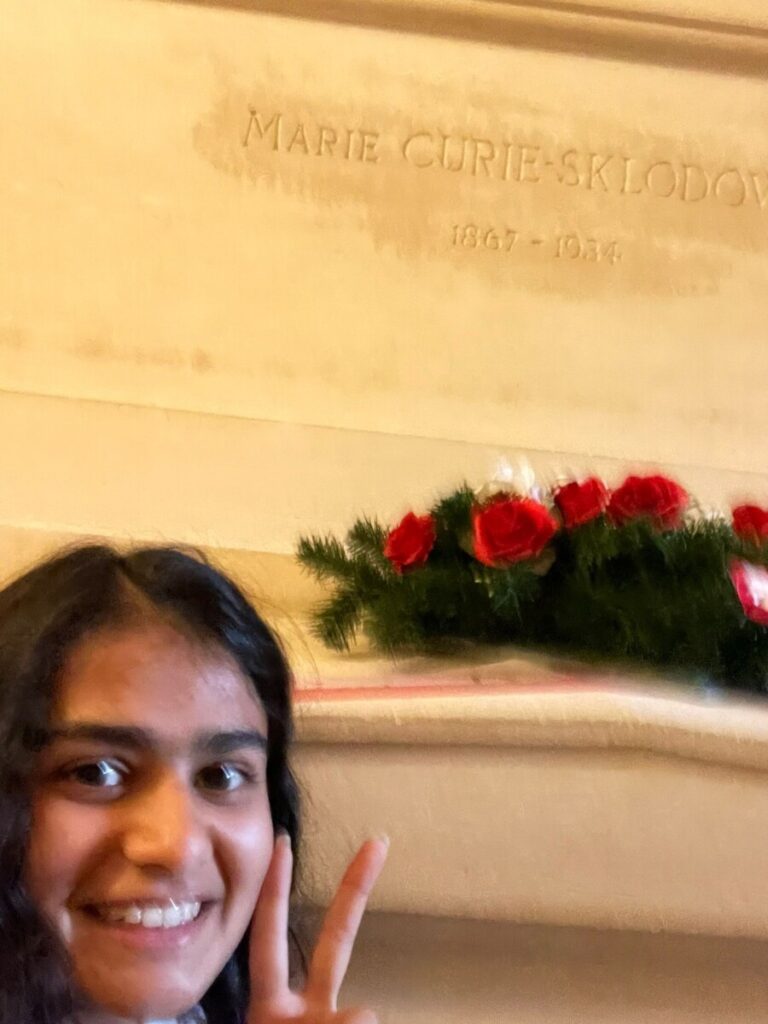On June 15th, 2022, we visited the pantheon as part of our class visit. this monument lies in the 5th arrondissement. It was intended to be a church dedicated to Saint Genevieve. However, once the construction was completed, the French revolution started and voting led to the church being transformed into a mausoleum, to house the bodies of distinguished French citizens, inspired by the Pantheon in Rome. It was an exciting visit, despite its similarities to Pere Lachaise, the mausoleum felt very different.

All the bodies buried at the Pantheon were individuals who achieved greatness publicly only after July 14, 1978, of which Marie Curie was one. Marie Curie a.k.a Maria Sklodowska came to Paris in 1891, to continue her studies in physics and mathematics and gained her Doctor of Science degree in 1903. She is one of the 6 women buried in the pantheon and is known for her discoveries in physics and chemistry. She was awarded the noble prize twice when she was alive!. Her most famous discovery was in radiology, where she developed the methods for separating radium from radioactive material and polonium, (named after her birth country, Poland).

Radiology and the use of radium today are most commonly used in the field of oncology to help eliminate cancer using chemotherapies. Radiation from radium is a very common form of radiation used to remove cancer from the brain. Marie Curie is also known for the development of brachytherapy as a method to remove cancer with the collaboration of Claudius Regaud. Brachytherapy delivers high levels of radiation to brain tumors, but has a very high specificity, and thus spares any surrounding tissue to the tumor. Brachytherapy also has a low rate of necrosis of tissue in comparison to other radiation methods. The discovery of radium and polonium as well as a method for removing cancer using radiation is a huge step in oncology and neurooncology.
Apart from the use of this in removing cancer from various body parts, especially the brain, ionizing radiation is very commonly looked at for neurodegenerative diseases. In a study by Sharma et. al 2018, the team of researchers discusses the long-term effects of radiation and exposure to radiation on the prevalence of neurodegenerative diseases. They conclude that the epidemiology of biological mechanisms is yet to be discovered but they showed that slower, long-term radiation from various different sources could be a leading factor in not only cancers and birth defects but also neuro-degenerative effects related to other factors such as age.
Overall, it was a fun visit and helped me learn the histories behind the various distinguished French citizens who I would have otherwise never known!

References:
https://www.nobelprize.org/prizes/physics/1903/marie-curie/biographical/
https://www.frontiersin.org/articles/10.3389/fnagi.2018.00134/full
